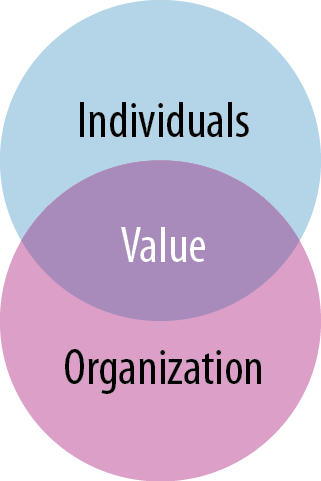CHAPTER 1
CHAPTER 1. Introducing Alignment Diagrams
âThere is only one valid definition of business purpose: to create a customer.â
IN THIS CHAPTER
- Introduction to alignment diagrams
- Value-centered design
- Principles and benefits of mapping
People expect some benefit when they use the products and services an organization provides. They want to get some job done, solve a problem, or experience a particular emotion. If they then perceive this benefit as valuable, theyâll give something in returnâmoney, time, or attention.
To survive, organizations need to capture some worth from their offerings. They need to earn profit, maximize reach, or improve their image. Value creation is bidirectional.
But how do we locate the source of value in such a relationship? Simply put, value creation lies at the intersection of human interaction with the provider of a service. Itâs where the experiences of individuals intersect with the offerings of an organization (Figure 1-1).

FIGURE 1-1. Value lies at the intersection of individuals and the offering of an organization.
A number of years ago, I was struggling to determine what type of diagram to use on a project: a customer journey map, mental model diagram, service blueprint, or something else. After some comparison of several examples, a similar set of principles became ...
Get Mapping Experiences now with the O’Reilly learning platform.
O’Reilly members experience books, live events, courses curated by job role, and more from O’Reilly and nearly 200 top publishers.

